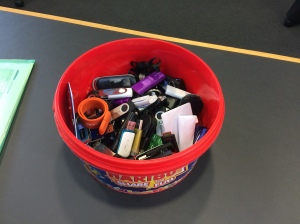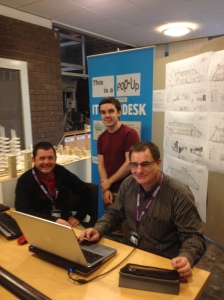Some of you may have noticed some inclement weather in the North East of Scotland these past few weeks leading to flooding, blocked roads and power cuts. A lot of this peaked on December 30th in the Garthdee area of Aberdeen, where the RGU Campus is. We didn’t get flooded, but there was quite a big power cut across the Campus.
Over the past few years we have moved all our core IT infrastructure into two new datacentres – sharing with the University of Aberdeen and North East Scotland College. One of them is on the RGU Campus so this power cut was a good test. Both datacentres are well equipped with battery backup, plus generator backup – but of course as much as you can test these components in controlled circumstances, there is nothing like the real thing.
In the event, when it became clear that there had been a power cut, I received an anxious phone call from the duty manager asking me if the data centre and our IT systems would be OK? By the time I received the call, the automatic alerts had already notified technical staff in IT Services and the Head of IT Operations and Support, Richard Lynch, was on his way to the Garthdee Campus. There he found that both the battery backup and generator had kicked in automatically as they are designed to when the power was cut. All our IT services continued without interruption and when power was restored the generator powered itself down again and everything settled back to normal.
Many if not most of the major incidents I have encountered in IT have been down to a loss of cooling and/or power in the datacentre. Incidents such as these demonstrate the value of investing properly in datacentre resilience. What ended up being a non-event could otherwise have been a a much more protracted IT recovery operation.

